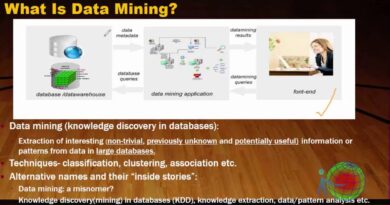SERP TECHNIQUES: Search Engine Optimization strategies techniques(Domain name and Linking strategies)
Contents
- 0.1 SERP Techniques: SEO Strategies for Domain Name & Linking
- 0.2 1. Domain Name Strategies for SEO
- 0.3 Best Practices:
- 0.4 Domain Age & SEO Impact
- 0.5 2. Linking Strategies for SEO
- 0.6 (A) Internal Linking (On-Page SEO)
- 0.7 (B) External Linking (Off-Page SEO)
- 0.8 3. Advanced SERP Techniques
- 0.9 Conclusion
- 1 🔍 What is SERP?
- 2 🚀 SEO Strategies Overview
- 3 🏷️ 1. Domain Name Strategy for SEO
- 4 🔗 2. Linking Strategies (Backlinking & Internal Linking)
- 5 📊 Tools to Help with SEO & Linking:
- 6 🧠 Summary:
SERP Techniques: SEO Strategies for Domain Name & Linking
Search Engine Results Pages (SERP) are crucial for website visibility. Effective SEO strategies focus on domain name selection and linking techniques to improve ranking.
1. Domain Name Strategies for SEO
A domain name is a website’s identity. Choosing the right one improves SEO.
Best Practices:
Keyword-Rich Domains → Include relevant keywords (e.g., bestshoes.com).
Short & Memorable → Easy to remember, type, and share (e.g., techbuzz.com).
Use Top-Level Domains (TLDs) → .com, .net, .org perform well globally.
Avoid Hyphens & Numbers → Complicates user experience and SEO.
Brandability → Unique and recognizable (e.g., Nike.com).
Domain Age & SEO Impact
- Older domains with strong backlinks rank better.
- Avoid frequently changing domains to maintain domain authority.
2. Linking Strategies for SEO
Internal and external linking improve search rankings by passing link juice and boosting crawlability.
(A) Internal Linking (On-Page SEO)
Use Keyword-Rich Anchor Texts → Helps search engines understand page context.
Logical Site Structure → Helps users navigate easily.
Link Important Pages → Homepage, blog posts, and cornerstone content.
Avoid Deep Nesting → Keep key pages within 3 clicks of the homepage.
(B) External Linking (Off-Page SEO)
Backlink Building → Get links from high-authority websites (DA 50+).
Guest Posting → Write articles for other sites with links to your website.
Broken Link Building → Find & replace broken links with your content.
Social Media & Forum Links → Engage on Quora, Reddit, LinkedIn.
Avoid Spammy Links → Buying backlinks can lead to Google penalties.
3. Advanced SERP Techniques
Mobile Optimization → Google prioritizes mobile-friendly websites.
Page Speed Optimization → Faster sites rank higher.
Schema Markup → Enhances rich snippets (FAQs, reviews).
Voice Search Optimization → Target long-tail conversational keywords.
Conclusion
Choose an SEO-friendly domain name with keywords & brandability.
Implement internal linking for better navigation and indexing.
Backlinks from authoritative sites improve ranking.
Would you like SEO tools recommendations for analyzing domain and links?
Here’s a breakdown of SERP techniques and SEO strategies, with a focus on Domain Name and Linking Strategies — two core areas that influence Search Engine Results Page (SERP) rankings.
🔍 What is SERP?
SERP stands for Search Engine Results Page, the page you see after typing a query into a search engine like Google. SEO (Search Engine Optimization) helps websites rank higher on this page to drive more organic traffic.
🚀 SEO Strategies Overview
SEO techniques are generally grouped into:
-
On-page SEO: content, keywords, meta tags, URL structure
-
Off-page SEO: backlinks, social signals, brand mentions
-
Technical SEO: site speed, mobile responsiveness, schema markup
🏷️ 1. Domain Name Strategy for SEO
✅ Best Practices:
| Tip | Benefit |
|---|---|
| Use exact match or partial match keywords | Helps with relevance in Google |
| Keep it short and memorable | Easy to share and recall |
| Use a clean TLD (.com, .org, .net) | Preferred by users and trusted by search engines |
| Avoid hyphens or numbers | Hard to remember and may look spammy |
| Use brandable names | Helps with long-term authority |
🧠 Examples:
-
Good:
bestgardeningtools.com -
Bad:
best-gardening-tools-4u.net
🔄 Bonus Tip:
If your domain has history and authority, it can help boost rankings (called domain age and domain authority).
🔗 2. Linking Strategies (Backlinking & Internal Linking)
🔹 A. Internal Linking
Links that connect pages within your own website.
Benefits:
-
Passes link juice to deeper pages
-
Helps search engines crawl your site
-
Improves user navigation
Best Practices:
-
Use descriptive anchor text (e.g., not just “click here”)
-
Link from high-authority pages to lower ones
-
Keep links natural and relevant
🔹 B. External Linking (Backlinking)
Links from other websites to your site.
High-quality backlinks = Higher SERP rankings.
📈 Key Techniques:
| Method | Description |
|---|---|
| Guest Posting | Writing for other sites in exchange for a link |
| Broken Link Building | Find broken links on other sites and suggest yours |
| Skyscraper Technique | Create better content than what others are linking to |
| Influencer Outreach | Get influencers to link to or mention your content |
| Content Promotion | Share widely to attract natural backlinks |
❌ What to Avoid:
-
Buying links (against Google’s guidelines)
-
Spammy link directories
-
Irrelevant or low-quality backlinks
📊 Tools to Help with SEO & Linking:
-
Ahrefs / SEMrush – for backlink analysis
-
Google Search Console – internal link tracking
-
Moz Link Explorer – authority scoring
-
Ubersuggest – keyword and domain insights
🧠 Summary:
| Strategy Area | Key Techniques |
|---|---|
| Domain Name | Short, relevant, brandable, keyword-rich |
| Internal Linking | Natural anchor text, user-focused navigation |
| External Linking | Guest posts, outreach, broken links, skyscraper content |
Would you like a visual guide (PDF or infographic) on this, or examples of backlinks and anchor text from real websites?

